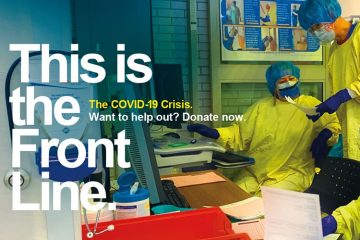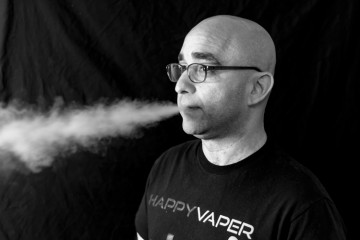Vaping: The New Addiction
The original intent of e-cigarettes — which was to help smokers reduce and ultimately quit smoking — has, instead, taken on a whole new life with youth vaping.
How many times have you walked by a group of young people hanging out on a street corner or maybe outside a store, puffing away on what looks like a USB thumb drive or a pen, or what is known as a “Cig-a-Like?” Your children might be with you as you hurry by, so you sniff the air wondering if that second-hand vapour, thicker than regular cigarette smoke, is tobacco, e-juice or weed, the latter of which, as of last fall, is now a legal substance. It might be hard to tell whether the flavourful whiff you catch as you walk by is a new strain of marijuana or a custom vape e-juice bump.
So what exactly is vaping? Basically, it involves the same actions as smoking. A person inhales and exhales vapour produced by electronic cigarettes (e-cigarettes) or other similar devices. The e-cigarette cartridges, which are battery powered, are filled with a liquid that usually contains nicotine, chemicals and a host of pleasing, select-your-favourite flavours. Once heated, the liquid turns into a vapour (which the smoker inhales); hence, the term vaping. E-cigarettes do not produce tobacco smoke per se, but rather an aerosol with components made up of fine particles containing varying amounts of toxic chemicals. These, unfortunately, have been linked to both respiratory and heart issues.
“Nicotine contained in vapour products can be potentially addictive,” says Ministry of Health spokesperson David Jensen. “Addiction to nicotine in youth can lead to prolonged use of cigarettes or e-cigarettes, which are often associated with negative health impacts. For youth, vaping may have harmful impacts on the brain, affecting memory, concentration and brain development. Vaping may also potentially lead to respiratory illnesses among people who vaped nicotine or cannabis-related products, although more investigation is needed to determine the vaping agent or agents responsible.”
A number of factors contribute to the popularity of vaping with young people, including the “cool” factor, the discreet size of the vaping mechanisms and a desire to fit in, or be perceived as one of the crowd. Of course, the custom fruit and candy flavours hold their own appeal. Popular e-juice flavours among young people are so reminiscent of their childhood, how can they resist? Fruit Loops, gummy bears, SweetTarts, Kool-Aid, Rocket Pops, cotton candy and banana split are all flavours with which young vapers can identify.
And then there is Juul, the vaping device that is all the rage with young people, while at the same time being a major cause of anxiety for both parents and health authorities. Produced by San Francisco’s e-cigarette company Juul Labs, the Juul devices, often referred to as the “iPhone of vapourizers,” are different from other e-cigarettes in appearance. They are a sleek, now you-see-it-now-you-don’t accessory that can be palmed within even the daintiest of youths’ hands. Known for their high nicotine content, high cost, easy availability at gas stations and convenience stores (where young buyers are not offered advice or warnings as to the product’s inherent dangers) and the lack of tell-tale vapour plumes, the devices have cartridges called Juul pods, which contain approximately the same amount of nicotine as a pack of cigarettes. Of concern is that Juul does not offer a zero milligram nicotine option.
“We Are Highly Concerned That We Are Introducing A Whole New Generation To Smoking; It Is Quite Frightening” — Terry Dean, President and CEO, Canadian Lung Association
“Nicotine is highly addictive. And the dosage in some of these vaping devices is quite high — up to about 60 milligrams — versus the 20 milligrams, which has been regulated in other parts of the world,” says Terry Dean, President and CEO of the Canadian Lung Association. ‘There is evidence of issues around brain development in youth relative to the usage of vaping. Certainly, we are highly concerned that we are introducing a whole new generation to smoking; it is quite frightening.”
Health Canada, in fact, has notified Ontario of three severe pulmonary disease incidents related to vaping through the Canadian Consumer Safety and Protection Act, although no cases have been confirmed.
“Up until August, there were isolated instances of different lung diseases that were reported in people who were vaping various things,” says Dr. Matthew Stanbrook, staff respirologist at the Toronto Western Hospital and chair of the Canadian Thoracic Society guideline panel on cannabis and respiratory health. “But in August, things changed. People were going to hospitals with acute lung illnesses, usually to the critical-care units. One-third of cases required mechanical ventilation, with at least a dozen deaths reported in the [United] States. These cases involved a substantial number of people who were under the age of 18 [years]. This is unprecedented.”
Over the past 40 years, the government and many organizations — both in the health and social sectors — have been actively diligent around reducing smoking in all public buildings, parks, venues and restaurants. In fact, as the number of smokers who butted out declined, people who lit up were regarded as social pariahs. However, e-cigarettes seem to have a different aura attached to them and are perceived both as an aid to helping smokers quit (and less harmful overall) and more socially acceptable. But, while there has definitely being a significant reduction in the number of people who smoke cigarettes, there has also been a significant uptick in the number of youth who vape.
According to the Canadian Vaping Association’s posted statistics, the current estimate of retail and manufacturing vaping outlets number in excess of 800 and represent well over 5,000 employees, as well as hundreds of thousands of customers and $350 million in revenue.
“As a specialty vaping retailer, with informed professionals who are aware of what is in the products, our intent is to help people quit smoking cigarettes. Vaping is a tool to aid in that process,” states Suria Ghafoori, who is currently doing outreach for the family-owned GTA Vapes, which has seven locations in the Greater Toronto Area, two of which are located in Woodbridge, Ont. “The reason vaping works so well is because it simulates the hand-to-mouth sensation that a lot of smokers want. As a part of our mandate, we develop meaningful connections with our customers. We ask them why they want to quit, how long they have been smoking, as well as the quantity and frequency of their habit. The ultimate goal is to reduce the intake of nicotine on a consistent basis, until ultimately the nicotine count is at zero.”
According to a September 19, 2019, Time magazine article, a January 2019 U. S. study sponsored by the National Institute on Drug Abuse reports that “the increase in vaping in 2018 was the largest ever recorded for any substance in the 44 years” that it has tracked adolescent drug use.
And in Canada, the popularity of vaping has literally burst into flames. Since the popularization of vaping devices, youth vaping and smoking rates have risen for the first time in a generation. In a new study led by Professor David Hammond of Ontario’s University of Waterloo and published in The British Medical Journal, it was reported that there has been a 74 per cent increase in Canadian youth who vape. In a single year (2017– 18), vaping among 16- to 19-year-olds increased to 14.6 per cent from 8.4 per cent, a 74 per cent increase year over year.
The side-effects of nicotine on critical organs are multilayered and of deep concern. The inhalation of vaping products has caused irreversible lung damage, blood clots, peptic ulcers and heart palpitations. For teens whose organs are not fully developed, the effects of nicotine are doubly worrisome. The brain, the most complex organ in our bodies, is not fully developed until our mid-20s, so the effects of vaping relative to a teen’s brain development can include an impact on memory, concentration and learning — the exact tools needed to succeed throughout the formative learning years.
So what are some of the steps and measures that we, as parents, concerned citizens and adults who vape in the spirit of what vaping was originally intended for (that is, to reduce and eventually quit smoking altogether), should take to address what has been called in many circles an alarming epidemic, virtually a vaping tsunami?
First, we need to gather information around the scope and impact of vaping on teens, both physically and mentally. In a September 18, 2019 statement Deputy Premier and Minister of Health Christine Elliott voiced her concern relative to the prevalence and possible health consequences of vaping, especially as it relates to youth: “For this reason, and as a first step toward identifying solutions that meaningfully respond to this emerging issue, I am issuing a Minister’s Order under section 77.7.1 of the Health Protection and Promotion Act, which will require public hospitals in Ontario to provide the Chief Medical Officer of Health with statistical, non-identifying information related to incidences of vaping-related severe pulmonary disease. This information, not previously available to the Ministry of Health, will be critical as we continue to engage with leading experts to identify evidence-based solutions that protect our youth from the potential dangers of vaping.”
“People Were Going To Hospitals With Acute Lung Illnesses, Usually To The Critical care Units” — Dr. Matthew Stanbrook
Dean concurs. “Important questions need to be asked of the people who are going to hospital emergency rooms complaining of respiratory issues.” And “these questions should include: ‘What product were you smoking? How often do you use the product or device? Was it nicotine that was in the device? Did you alter the mechanism?’ We are desperate to find out what the root causes are for these latest issues. And once we do, we can put some strategies around it to mitigate it.”
Signs that vaping is taking a toll on a smoker include a cough, shortness of breath, chest pain, nausea and vomiting.
Interestingly, while tobacco producers have to report the number of products that they sell, the same rules do not apply to the distributors of vaping products. At the very least, Dean feels that vaping devices should have similar requirements to tobacco reporting. And as far as those sexy lifestyle ads with their subliminal messages of “Be cool, be part of the crowd when you vape,” Dean says that “we have learned through the tobacco strategy that if we limit advertising, and we limit availability, usage is curbed.”
Banning advertising that appeals to youth, including portraying a lifestyle that is enhanced by using vape products, and being consciously aware of the effects of vaping on our youth are key to limiting the alarming repercussions of this phenomenon, such as the severe case of respiratory distress experienced by a London, Ont., teenager, one that had the youth on life support before he eventually recovered.
“My Message To Parents — Whether They Are Thinking Of Using E-cigarettes Themselves Or Worried About Their Children Using Them — Is To Know That These Things Are Not Safe” — Dr. Matthew Stanbrook
According to Ghafoori, e-commerce is another big issue around vaping that needs to be addressed. “One of the most common problems around online vape retail shops is that they do not have age verification on their sites. An underage person can go onto a site, click the ‘I am 19’ age button and access product from there. If you can’t verify the age of an online buyer, then that is a way for underage kids to get product,” she says. (It should be noted, however, that Canada Post does have a service to verify identification if a retailer has implemented that system.)
Another issue that concerns Ghafoori is that the general public don’t know or understand there is a distinction between buying products from specialty vape stores that are there to support people who want to quit smoking and underground THC markets. “What are being offered are two totally different products, and that is what is getting people sick,” she says. “With the black market THC vapes, it is dangerous because the buyer does not know who made it and what is in it. THC cartridges containing vitamin E acetate have been found, which is the substance that is making people sick. And because it is the black market, there are no regulations around the availability and purchasing of these products.”
It is imperative for all of us not to let the health, well-being and futures of today’s youth go up in smoke because we haven’t done due diligence to implement the necessary and much-needed regulations and oversight around advertising messages and enhanced website accountabilities.
“The vast majority of the public have been convinced, largely because of advertising, that these products are safe, that they don’t have to be worried about the side-effects of usage,” says Dr. Stanbrook. “Hopefully, now that we have this epidemic of cases, we will finally become aware that the assumptions that we have made about their safety just aren’t true. My message to parents — whether they are thinking of using e-cigarettes themselves or worried about their children using them — is to know that these things are not safe,” he says. “They have chemicals in them which are known to be toxic to human beings, some are even known to be carcinogenic [and] some of them are the same chemicals that appear in cigarettes, at lower levels. E-cigarettes have been put on the market without any reasonable controls or limitations as to what can be put in them. Anyone who uses e-cigarettes is taking a gamble — there are a whole lot of unknowns and risks,” warns Dr. Stanbrook. “Youth need to be mindful and to know that this isn’t a safe thing to do. There can be many serious consequences, ones that have already landed people in hospital. This is just not a safe fun thing to do.”


















































































